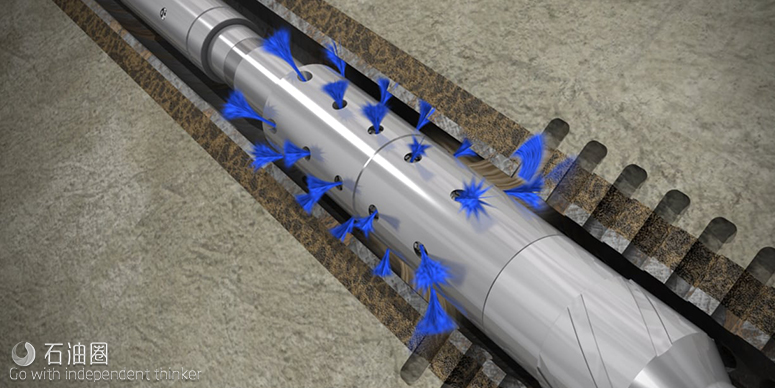Through utilization of the PWC (Perforate, Wash & Cement) plug and abandonment method (P&A) on the Valhall field, HydraWell has contributed towards Aker BP executing its plugging program significantly quicker than planned.
Since May 2017, HydraWell has contributed towards plugging 10 shut-in wells on the original drilling platform (DP) at the Valhall field center.
Compared to the first P&A phase on the DP platform from 2014 to 2016, Aker BP has reduced the average time per well by 50% in the latest phase, despite a rise in the complexity of the wells towards the end of the campaign.
Plugging wells on the DP platform is a key part of the work to modernize the Valhall field center. The three original platforms from when the field started producing in 1982 – QP, DP and PCP – will be removed. Four wells remain to be permanently plugged prior to the removal of the DP platform.
“We have significantly reduced the execution time of our P&A operations through improving a number of elements. HydraWell’s PWC technology, with HydraHemera in front, is one such element. Among other things, we have run computer simulations to identify how much time we need to wash the back of the casing before the cementing starts. This has improved our understanding and means that we can do things faster than before,” says Martin Straume, drilling engineering manager plugging and abandonment, Aker BP.
“In addition, together with HydraWell we have started running one-trip systems on applicable wells. This means that we drop the perforation gun into the well instead of pulling it back up before we start washing. This has contributed towards reducing execution time significantly,” Straume adds.
HydraWell’s HydraHemeraTM PWC system perforates the well before washing the casing and then setting the cement plug – a so-called rock-to-rock barrier that is required under the Norsok standard. Through this method a rock-to-rock barrier can be installed in less than two days. The technology can be utilized on both single and dual casing wells.
“It is impressive to witness how Aker BP leaves no stone unturned to identify improvements with regards to execution time, HSE and costs. We are proud to contribute with technology and knowledge towards this work. PWC reduces both costs, HSE risks and the environmental footprint of each plugging operation, so we feel that we are a good match for Aker BP’s ambitions,” says Arne G. Larsen, HydraWell’s vice president of business development.
Amounting to an estimated 48% of decommissioning costs (according to the UK’s Oil and Gas Authority) and with “train wreck” wells costing nearly double-digit million dollar figures, it’s an activity that brings in no revenues, just headaches.
There are firms looking to ease the pain, developing the likes of thermite plug solutions and plasma drilling technology. Something less exotic is starting to make in-roads into the P&A space, however: perforate, wash and cement (PWC) tools and methodologies. Norway’s Hydrawell was a first mover in the PWC space. The firm’s PWC solutions comprise a suite of tools helping to cut well P&A cost, where section milling would have been required, from ca.10-14 days to just two, when run as a one-trip solution.
The firm is assessing options for a rigless version of its latest tool portfolio, to further reduce costs, as well as technologies for barrier verification, without having to redrill the just installed barriers – for re-logging.
The HydraHemera™ system was developed to enable plugging a well across multiple annuli without performing a section milling operation.
The system consists of two components, a HydraHemera™ Jetting Tool and a HydraHemera™ Cementing Tool. The HydraHemera™ Jetting Tool is used to wash and clean out debris in the annuli behind perforated casings. It features jet nozzles which are positioned at irregular angles and engineered for optimum configuration and exit velocity. The jets penetrate and clean thoroughly behind multiple perforated casings.
The HydraHemera™ Jetting Tool ensures optimum conditions in the casing annuli prior to placing the plugging material in the cross section. Debris, old mud, barite and old cuttings are replaced by clean mud.
Using a ball drop mechanism after jetting, the HydraHemera™ Cementing Tool is activated, and combined with the HydraArchimedes™ tool enable placing plugging material in the entire cross section of multiple annuli, and hence, establishing a proper barrier in the well for P&A or sidetrack purposes.
OPERATION: After completing a perforating run with big hole charges in the target zone, the HydraHemera™ system is run in hole to the top of the perforated section. The HydraHemera™ Bull Nose allows for circulation while running in hole. A ball is dropped which activates the cleaning nozzles. Clean mud is pumped which exits the HydraHemera™ as high energy jets, thoroughly cleaning behind up to two casing strings. A second ball drop activates the cementing nozzles in the HydraHemera™ Cementing Tool, which feature flow area optimized for cement. Cement is pumped while rotating the assembly, and the cement is placed efficiently into the intermediate and outer annuli utilizing the HydraArchimedes™ tool.
FEATURES/BENEFITS: · One trip plugging system · No milling required · Allows full flow when tripping in and out · Simple design and operation · Ideal for cleaning single and multiple annuli · Available for all casing sizes

 石油圈
石油圈
